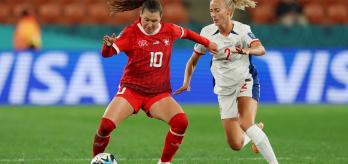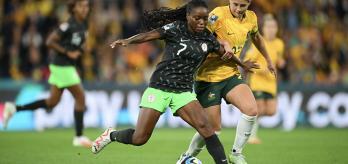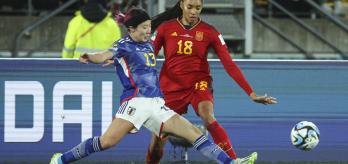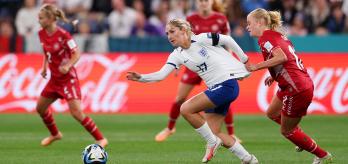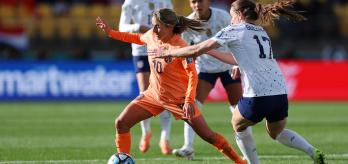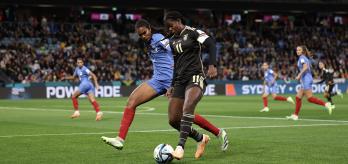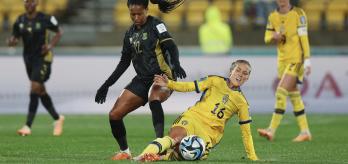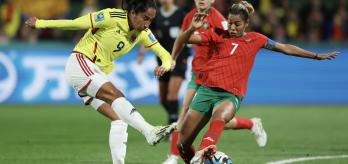Sweden showed all their experience at World Cup level to top Group G and win all three group games. Behind them, there was little to choose between South Africa, Italy and Argentina, but it was the Banyana Banyana who ultimately prevailed, coming from behind to edge out Le Azzurre in a thrilling encounter in Wellington. The South African winner came courtesy of Thembi Kgatlana, who revealed she had decided to stay with the squad despite family bereavements.
Sweden
Anna Signeul: Sweden's use of high-tempo combination play with line-breaking passes has enabled them to progress their play quickly in the games we've seen so far. Attacking at speed from the wide areas and committing players forward using clever passing patterns, combined with off-the ball movements and late runs in behind, has been so effective.
Out of possession, they favour a narrow mid-block with an aggressive mid-press, and they take a direct approach in their transitions to attack. Centre-forward Stina Blackstenius (11) has really facilitated this approach, as she is always ready to receive a pass in behind the opposition defence.
Another standout feature of their attacking strategy has been their creative, dangerous set pieces, especially corners. Precise deliveries, good timing on headers and excellent second-phase support have made them very dangerous and effective from set pieces.
South Africa
Gemma Grainger: South Africa have displayed a fast-paced, high intensity attacking game with a play forward and run forward mentality. They have attacking players with a real instinct and desire, along with a determination to link with a fast-attacking approach. They scored 6 goals in the group phase to qualify for the second round.
Out of possession, they apply high pressure and defend aggressively, with a player-orientated approach. This helps them compete well in 1v1 defensive situations. They had less possession than their opposition in all three group games, and spent more of their time in possession in the attacking transition phase than anywhere else on the pitch, which suited their attacking style of play.
Italy
Anna Signeul: In possession, Italy had some nice combination play and they committed numbers to their attacks. Their preference was to attack centrally, and we saw some really good off-the-ball movements from their forward players looking to get between the opposition’s lines and to try to break down organised opposition defences.
When they lost the ball, they wanted to counter-press quickly, especially when they had numbers high up the pitch. Sometimes, though, when this counter-press was by-passed, they looked vulnerable with so many numbers high up the pitch, meaning they had bigger spaces to defend and fewer players available to defend that space.
There was great variety in their set pieces and they were difficult for opposition teams to defend against.
Argentina
Aline Pellegrino: Argentina played their best attacking football in their second group match against South Africa. In this contest they claimed 61% possession, pushed their wide players into attacking areas of the pitch and had their midfielders and forwards infiltrating Banyana Banyana's midfield and defensive lines. This attacking strategy would mean Argentina would often create situations where they had three or four attackers in the opposition's penalty area.
Out of possession Argentina tried to contain the actions of their opponents by protecting the central areas of the pitch. This was done by keeping their defensive and midfield lines compact, pressuring any opposition player in possession of the ball in these areas and taking away spaces for opposition players to receive the ball in. Collectively, Argentina were a very tough team that dedicated a lot of energy to their defensive actions.
It wasn't meant to be in this edition of the World Cup and Argentina will have to wait a while longer for their first victory in the competition.








